Anvi Hoàng has been writing about this opera, The Tale of Lady Thị Kính, for two years. Here are some of her observations about the world premiere of The Tale of Lady Thị Kính at IU Opera in Bloomington, Indiana on February 7, 8, 14-15, 2014.
Have you subscribed to diaCRITICS yet? Subscribe and win prizes! Read more details.
First, a note: The Tale of Lady Thị Kính is an opera, not a musical. One fascinating thing about opera singers is that they don’t use microphones the way singers in musicals do. What you hear in an opera is the singer’s own true voice projecting over the orchestra to reach the end of the hall. Opera singers must be able to read music, and their music is a hundred times more complicated. Further, it is an insult to call an opera singer by any other name other than opera singer. There are many more differences between these two forms of theater, opera and musical, if you are interested in the subject. For the review of The Tale of Lady Thị Kính, please scroll down for a Vietnamese version followed by an English one.
Anvi Hoàng đã viết nhiều về vở opera The Tale of Lady Thị Kính trong 2 năm qua. Sau đây là một số nhận xét của cô về 4 buổi trình diễn ra mắt lần đầu trên thế giới vở opera này tại nhà hát opera IU ở thành phố Bloomington tiểu bang Indiana vào ngày 7, 8, 14, 15 tháng 2 vừa qua.
Một ghi chú: The Tale of Lady Thị Kính là một vở opera, chứ không phải musical=nhạc kịch. Một điều kỳ diệu về ca sĩ opera là họ hát không cần micro như ca sĩ hát trong nhạc kịch. Những gì người ta nghe trong một vở opera chính là giọng hát thật của những ca sĩ opera đó. Ca sĩ opera cũng bắt buộc phải đọc được nhạc, và nhạc họ hát thì khó hơn gấp trăm lần nhạc kịch. Còn có nhiều sự khác biệt nữa giữa hai hình thức sân khấu này (opera và nhạc kịch) mà quý vị có thể tra cứu thêm nếu muốn. Nên biết rằng, gọi ca sĩ opera là ‘ca sĩ’ bình thường thôi thì họ sẽ cảm thấy bị xúc phạm đấy, bởi vì không phải dễ mà trở thành ‘ca sĩ opera’. Bây giờ quay lại vấn đề bình về vở opera The Tale of Lady Thị Kính. Bài tiếng Anh theo sau bài tiếng Việt.

Bàn ba chữ cho The Tale of Lady Thị Kính
Cả tháng Một và đầu tháng Hai, tôi đã bỏ hàng chục giờ đi quan sát người ta tập dượt The Tale of Lady Thị Kính, nào là với dàn nhạc giao hưởng, nào là với dàn đồng ca, nào là diễn xuất với đạo diễn sân khấu. Tôi chụp hàng ngàn tấm hình. Rồi tham dự cả 4 buổi trình diễn thử y như thật. Và tham dự cả 4 buổi trình diễn thật vào ngày 7, 8, 14, 15 tháng 2. Liệu tôi có thể bình luận một cách khách quan về vở opera The Tale of Lady Thị Kính hay không? Được chứ. Với một vài dữ liệu thực tế và một chút thời gian để suy nghẫm, tôi sẵn sàng chia sẻ những quan sát sau.
Trang phục, phông cảnh, âm nhạc
The Tale of Lady Thị Kính là câu chuyện về quá trình thăng hoa trở thành Phật của một cô gái trẻ. Khi bị đuổi khỏi nhà chồng vì sự hiểu lầm, Thị Kính phải giả trai đi tu ở chùa. Tại đây, Thị Kính, nay là Tiểu Kính Tâm, lại bị cô Thị Mầu lẳng lơ tán tỉnh, và sau đó bị Thị Mầu đổ oan cho là cha của đứa bé trong bụng mình. Về chùa, Tiểu Kính Tâm lại mất nơi nương náu vì Su Cụ cũng đuổi Kính Tâm ra khỏi chùa. Nghĩ đến những oan trái trong đời mình, Tiểu Kính Tâm lần nữa chấp nhận hy sinh để cho người khác được sống yên ổn. Tiểu Kính Tâm quyết định bồng con của Thị Mầu ra đi tìm đường sống mới. Tiểu Kính Tâm sau đó chết đi vì kiệt sức và đói khát. Cảm động trước sự hy sinh quên mình của Thị Kính, Đức Phật tôn bà làm Phật Quan Âm Thị Kính. câu chuyện này làm tôi nhớ đến những người sống hy sinh vì người khác như Mẹ Teresa, hoặc cả Chúa Giê Su cũng vậy. Quả thật The Tale of Lady Thị Kính là một câu chuyện đầy tính nhân bản phổ quát (universalism) về tình yêu (love), sự độ lượng (compassion) và sự hy sinh không giới hạn (selflessness), được biết đến từ thế kỷ 10 ở Việt Nam. Đến thời điểm này, nói rằng ba chữ: tình yêu (love), sự độ lượng (compassion) và sự hy sinh không giới hạn (selflessness) là những gì khán giả cảm nhận được sau khi xem The Tale of Lady Thị Kính không phải là quá chút nào. Những lời nhận xét tôi thường nghe nhất từ khán giả là vở opera The Tale of Lady Thị Kính “tuyệt vời”, “cảm động” và “xúc động”.
Đến cuối vở diễn, khán giả đứng dậy vỗ tay đồng loạt (standing ovation), cả 4 buổi diễn đều như thế cả. Đây chính là dấu hiệu của sự thành công không thể chối cãi được của vở opera The Tale of Lady Thị Kính. Hay lắm thay cho nhà soạn nhạc cũng là người viết tuần bản P.Q. Phan; hay lắm thay cho tài điều khiển của nhạc trưởng David Effron; hay lắm thay cho đạo diễn sân khấu Vince Liotta và nhóm nghệ sĩ thiết kế: thiết kế cảnh Erhard Rom, thiết kế trang phục Linda Pisano, thiết kế ánh sáng Todd Hensley; hay lắm thay cho giám đốc kỹ thuật nhà hát opera IU Alissia Garabrant và nhóm dựng cảnh: các nghệ nhân ở xưởng gỗ, xưởng sơn và đồ dùng sân khấu, xưởng trang phục; hay lắm thay cho hai ê kíp diễn viên; hay lắm thay cho nhóm thợ điện và toàn bộ nhân viên sau bức màn nhung đã làm cho mọi việc trôi chảy.
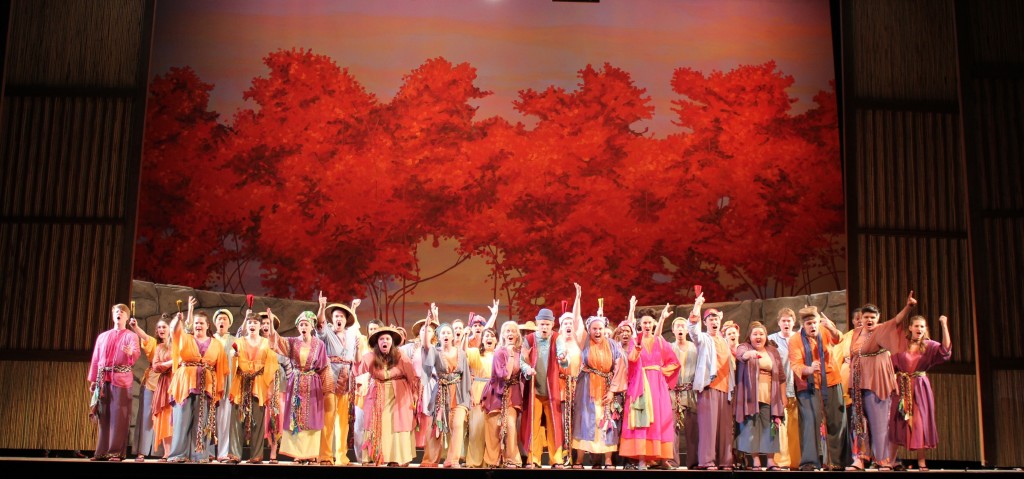
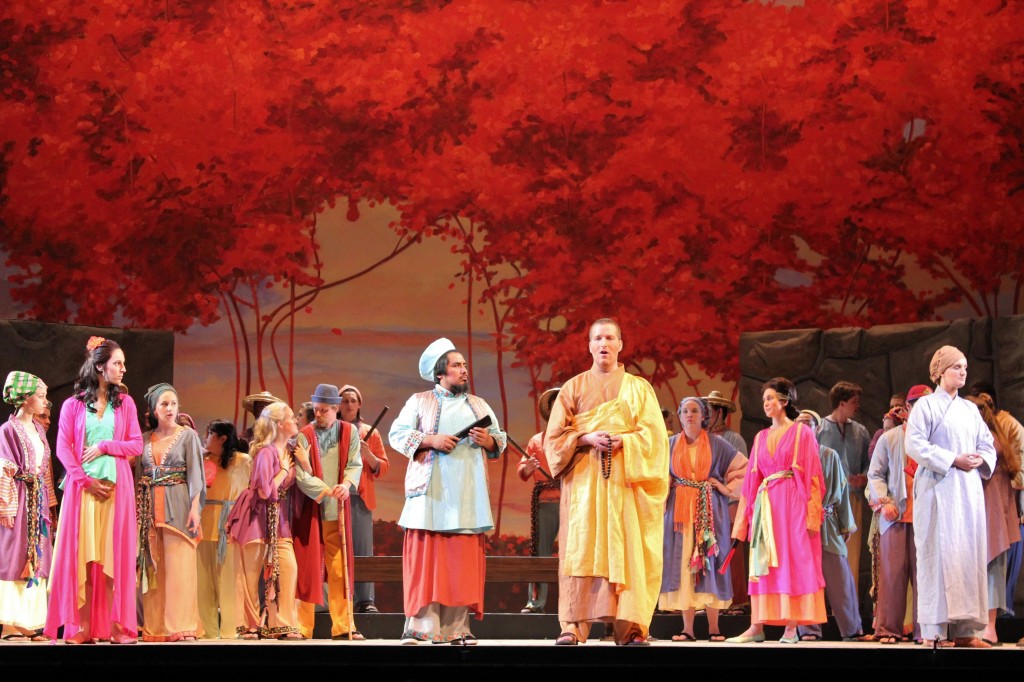
Đạo diễn sân khấu Vince Liotta nhấn mạnh trong nhiều lần phỏng vấn là nhóm thiết kế của ông không hề có ý định dựng lại một sân khấu Việt Nam. Hơn nữa, đằng nào thì nhạc của nhà soạn nhạc P.Q. Phan cho vở The Tale of Lady Thị Kính cũng là nhạc hiện đại phương Tây. Do đó, điều họ cố gắng làm là tạo ra cảm giác Việt Nam trong vở diễn sao cho khán giả người Việt biết về văn hóa Việt Nam và cả khán giả người Mỹ không biết về văn hóa Việt Nam đều có thể cảm nhận được. Đây là một quyết định rất khôn ngoan và một hướng đi rất khéo léo. Và họ đã thành công.
Kết quả là một sân khấu hiện đại mang tính tượng trưng để thích hợp với định hướng dàn dựng của đạo diễn cũng như âm nhạc mang phong cách phương Tây của vở The Tale of Lady Thị Kính. Cách dùng màu sắc tươi sáng như màu hồng, vàng, cam, xanh lá, vàng gold để ám chỉ không gian và thời gian; cách dùng những chất liệu có bề mặt đặc biệt như sợi đay nhám để làm phông và tre làm cửa; cùng với đường nét thiết kế gọn gẽ sắc sảo, đã tạo ra không gian đẹp mở rộng trí tưởng tượng của người xem, trên nền cảm giác Việt Nam đã được gợi lên trong các chi tiết thiết kế. Về mặt diễn xuất, cảm giác Việt Nam được nhấn mạnh hơn nữa qua một số điệu bộ của diễn viên và việc dùng một số vật dụng sân khấu được lựa chọn cẩn thận và mang tính ước lệ như quạt xếp, cái lọng, mâm quả, tượng Phật, v.v. Về phần mình, trang phục đóng góp vào việc tạo ra sự khác biệt về văn hóa bằng những màu sắc rực rỡ mang hơi ấm mùa Xuân của Việt Nam mà trước kia các nghệ sĩ nước ngoài chưa từng được thấy trong bất kỳ một vở opera nào, và kiểu mẫu thiết kế trang phục lại vô cùng phong phú, đưa người xem vào một không gian và thời gian khác hẳn. Sau nữa, ánh sáng trong vở opera The Tale of Lady Thị Kính lại được sử dụng theo một phương cách trái ngược truyền thống. Theo phương pháp truyền thống, ánh sáng thường được thiết kế để che giấu một phần phông cảnh và chỉ chiếu sáng một phần nào mà thôi. Ở đây, ánh sáng lại được dùng để làm nổi bật hết cỡ các đường nét của chất liệu và màu sắc trên sân khấu.
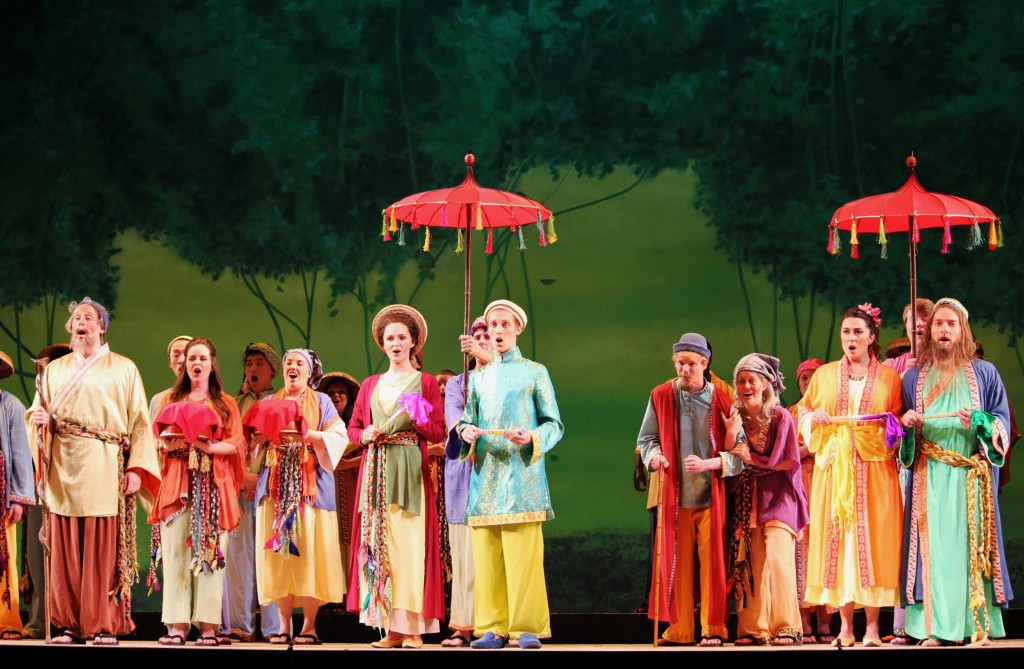
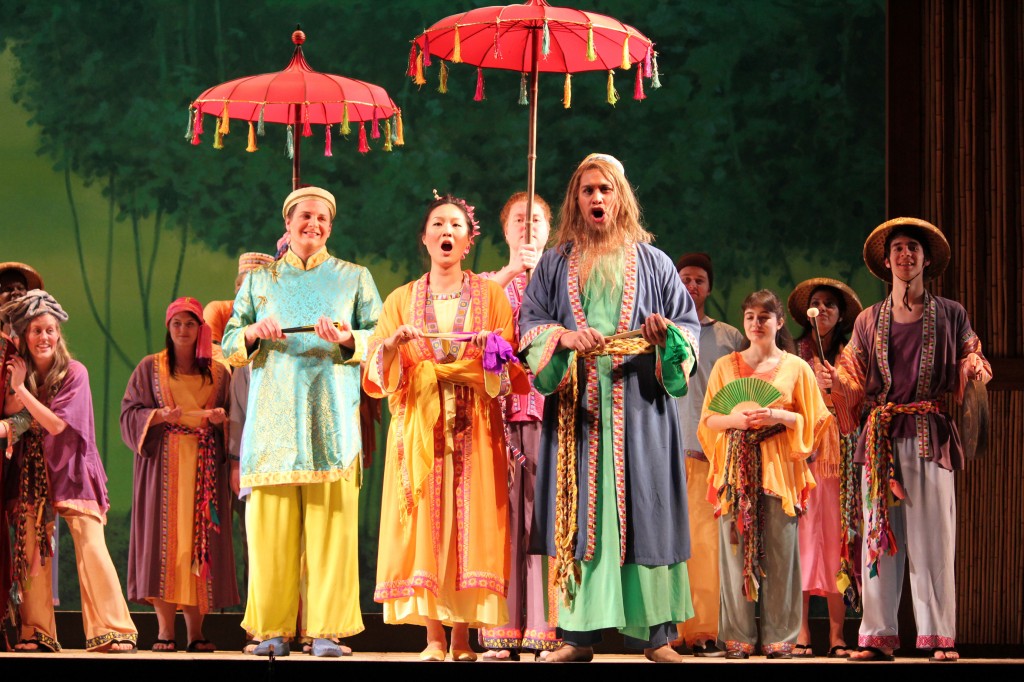

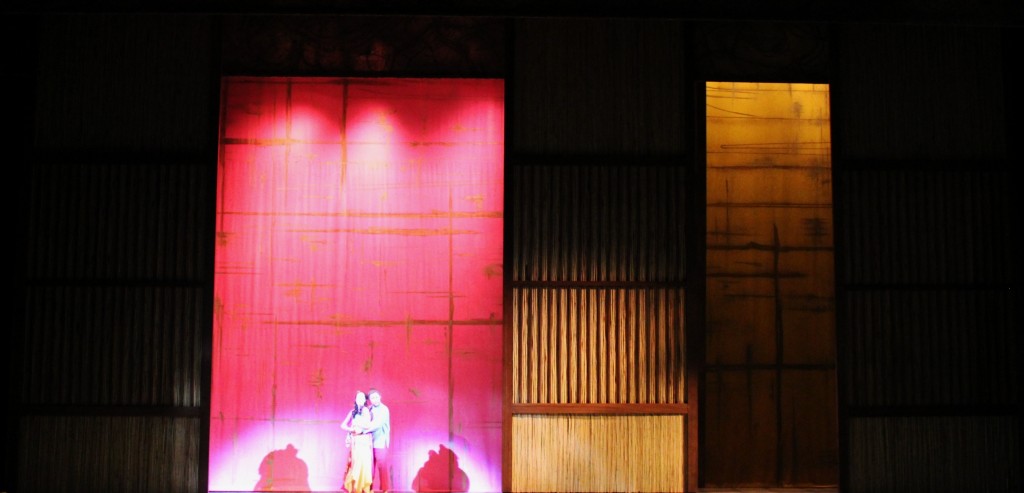
Trong vở opera The Tale of Lady Thị Kính, mỗi khi một nhân vật xuất hiện, họ rực rỡ dưới ánh đèn trong bộ trang phục đặc biệt của mình, mỗi nhân vật đều có những điệu bộ và tính cách đặc trưng của nhân vật, và những giai điệu rất riêng cho nhân vật của mình. Âm nhạc là yếu tố đầu tiên cũng là yếu tố cuối cùng kết nối mọi sự việc và mọi người mọi thứ lại với nhau. Thế là, khán giả được dịp tôn trọng vẻ yêu kiều của Thị Kính, mê điệu bộ lẳng lơ của Thị Mầu, cười sự ngây ngô của đầy tớ Nô, kinh hãi trước sự hung dữ của Sùng Bà, cười nhạo Sùng Ông say xỉn vô duyên. Đến khi các nhân vật mở miệng hát thì thật mê ly. Tôi đã được tận mắt xem họ tập dợt cả tháng và trò chuyện với họ. Ai cũng bảo rằng họ yêu thích phần nhạc của mình. Một là nhạc quá hay. Hai là mỗi nhân vật đều có một khoảnh khắc để hát về chính mình và khoe giọng hát của mình – đây là điều ca sĩ opera nào cũng thích. Và như thế, Nô hát điệu ngây ngô đáng yêu; Thị Kính tha hồ ‘đan’ một lưới giai điệu từ thấp lên cao từ trong sáng đến đứng đắn, trưởng thành, và rồi thăng hoa; Thiện Sĩ thì luyến láy một cách mơ mộng ngây thơ nhưng cũng đầy ngạo mạn; Vợ Mõ đúng là múa mỏ khôn ngoan giọng cao như hét; Thị Mầu cũng hát cao vút, điệu nhạc tuy nông nổi nhưng pha đẫm sự đam mê cuộc sống và tình yêu xác thịt; trong khi đó 4 bạn gái của Thị Mầu thì không ngừng tụng Nam Mô A Di Đà Phật, lúc thì khiêu khích lúc thì răn đe.
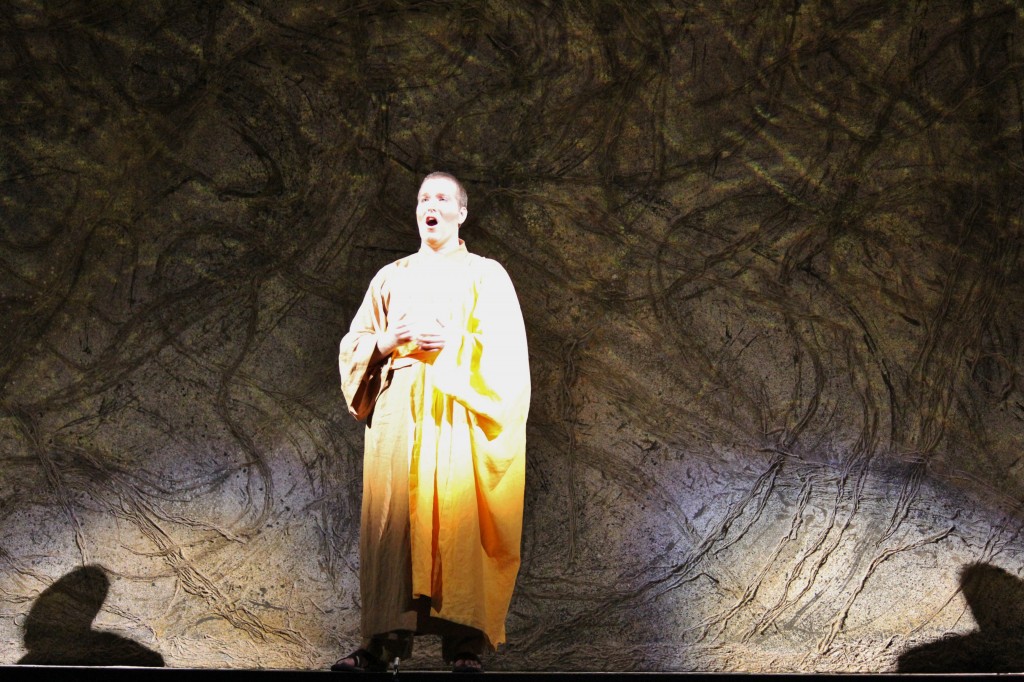
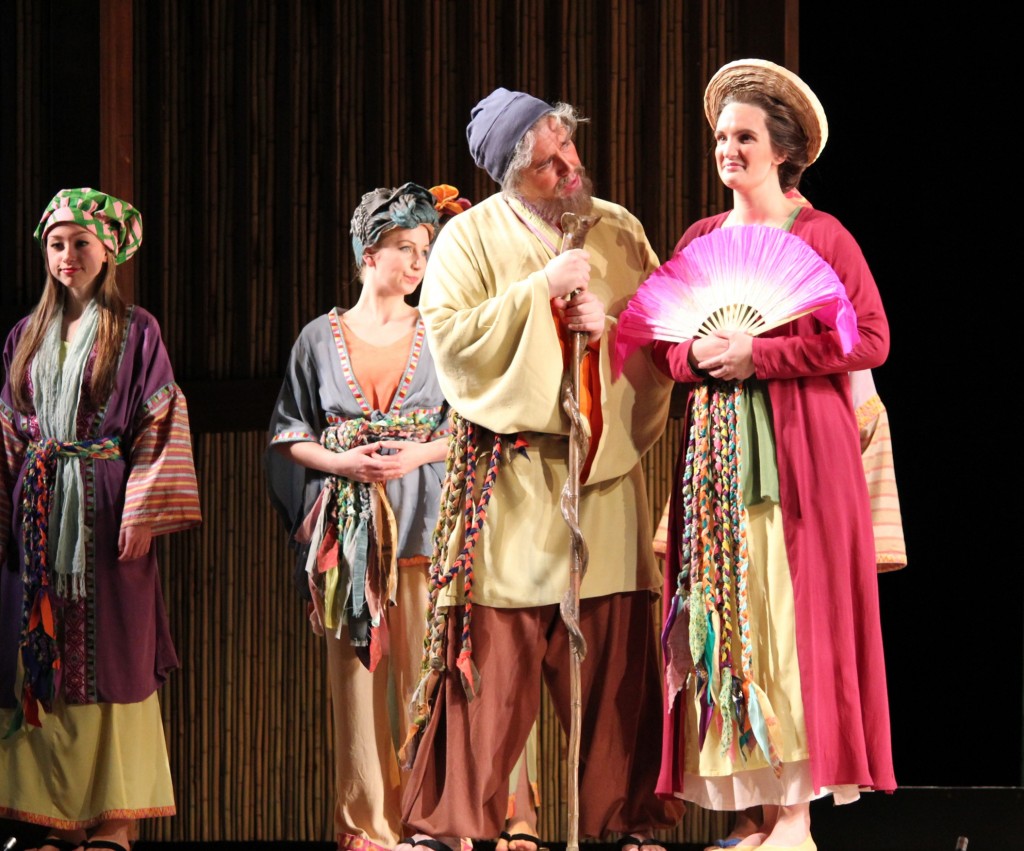
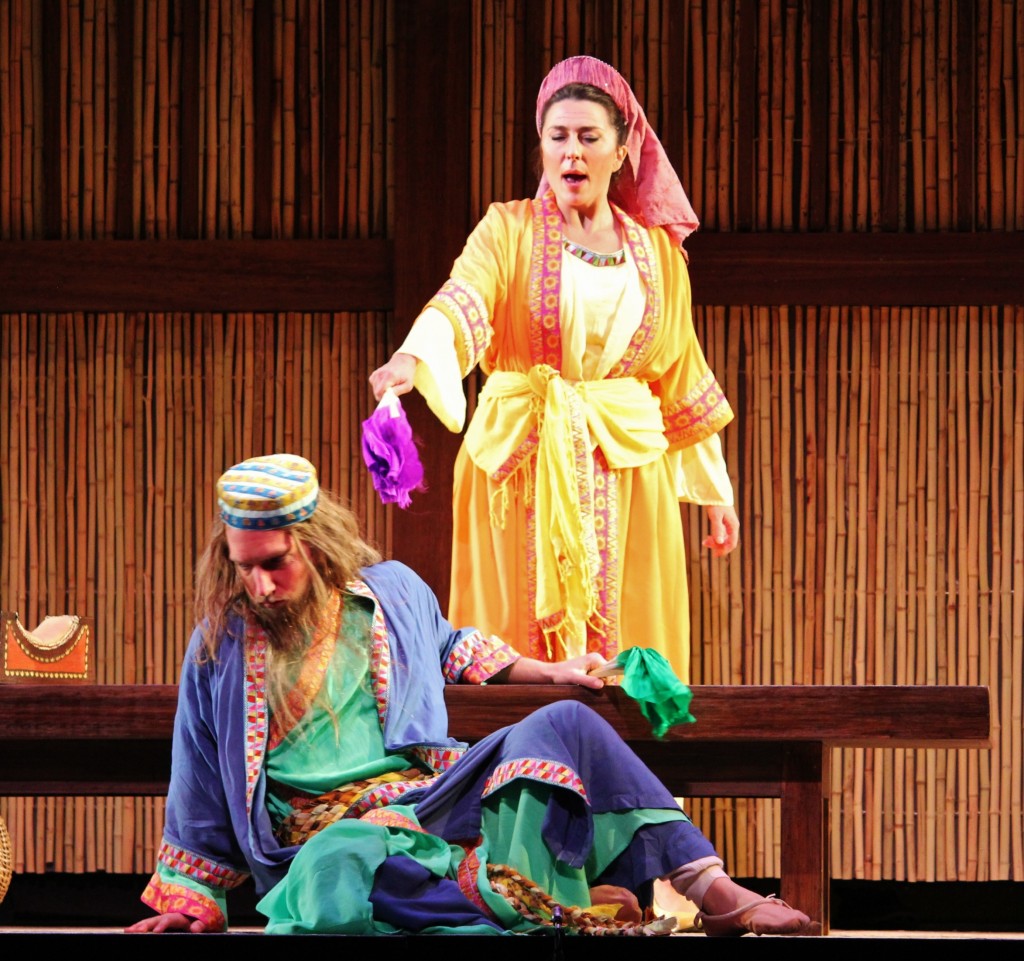
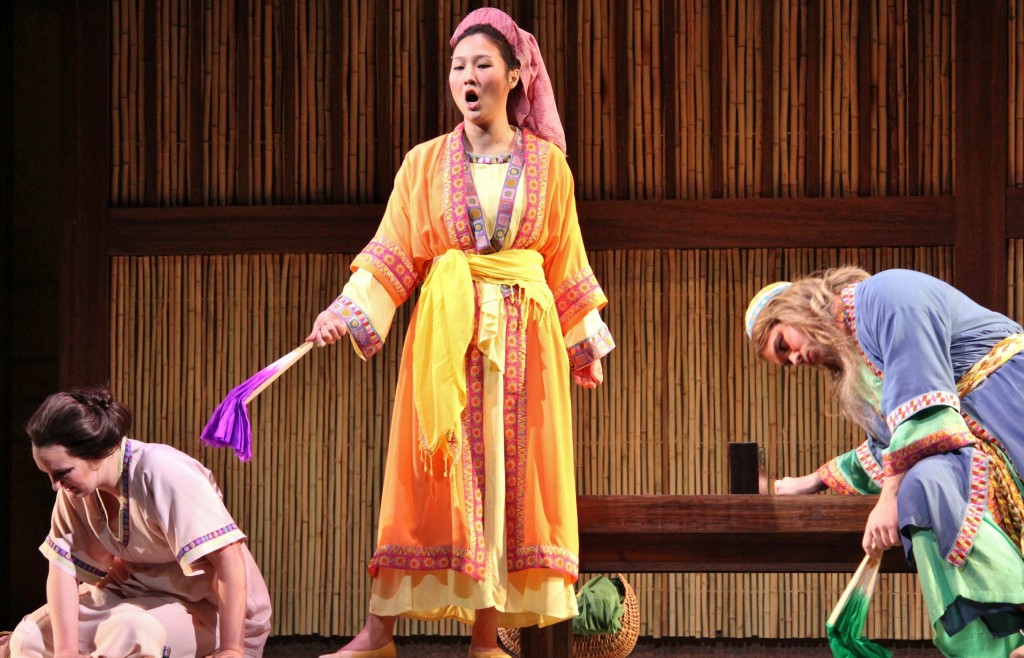

Cảm nhận chung là phần âm nhạc hay tuyệt vời. Trong khi nghe nhạc, lúc thì bạn thấy một bông hoa, lúc thì cả một vườn đầy hoa; bạn cảm nhận được sự đau buồn, niềm hạnh phúc, sự xấu xa, sự nghịch lý của linh hồn con người ta; bạn thấy những khoảng không gian mỏng và dày; bạn thấy ánh sáng và bóng tối trong không gian; bạn cảm thấy các chất liệu. ‘Đầy màu sắc’ là cụm từ nảy ra trong đầu bạn và bạn cảm thấy hợp lý quá. Rồi bạn ngỡ ra rằng, thì ra khi các nhạc sĩ nói đến ‘âm nhạc đầy màu sắc’ là thế này đây. Đúng là âm nhạc của The Tale of Lady Thị Kính đầu màu sắc sống động. Càng để ý kỹ bạn sẽ cảm thấy âm nhạc càng mê ly. Nhà soạn nhạc P.Q. Phan chủ trương viết nhạc cho vở opera sao cho bề ngoài có thể thu hút người nghe bình thường nhưng đào sâu bên dưới cũng hấp dẫn được những người trong giới chuyên môn ngành âm nhạc hàn lâm. Ông đã làm đúng như ông nói.
Trong tuần lễ đầu khai diễn vở opera The Tale of Lady Thị Kính, nhiều khán giả bảo rằng họ sẽ đi xem vở opera lần thứ hai vào tuần sau đó. Và chúng tôi đã gặp lại họ lần thứ hai tại buổi trình diễn của tuần thứ hai. Sau tuần lễ khai diễn đầu tôi cũng bắt đầu thu thập những lời cảm tưởng về vở opera The Tale of Lady Thị Kính từ khán giả. Hầu hết mọi người đồng ý rằng phông cảnh và trang phục tuyệt đẹp, diễn xuất hay, và âm nhạc tuyệt vời. Rất nhiều những cảm tưởng này là đến từ 200 người Việt Nam hoặc gốc Việt Nam từ các thành phố khác lái xe hoặc bay tới Bloomington chỉ để xem vở opera The Tale of Lady Thị Kính, hoặc khán giả Việt Nam xem vở opera qua internet. Nên nhớ rằng những người Việt Nam hoặc gốc Việt xem vở opera The Tale of Lady Thị Kính ai cũng ít nhiều biết đến câu chuyện Thị Kính rồi. Họ biết Thị Mầu hoặc Vợ Mõ là ai, tính cách ra sao. Do đó khi họ xem vở opera The Tale of Lady Thị Kính do người Mỹ diễn mà không cảm thấy xa lạ, ngược lại còn cảm thấy hay và đáng yêu nữa thì đây đã là một sự thành công của vở opera. Việc này cộng với việc những người nước ngoài khi xem The Tale of Lady Thị Kính đã thật sự xúc động và yêu thích vở diễn cho thấy sự thành công của The Tale of Lady Thị Kính đã vượt khỏi ranh giới văn hóa Việt Nam mà hòa vào văn hóa thế giới.
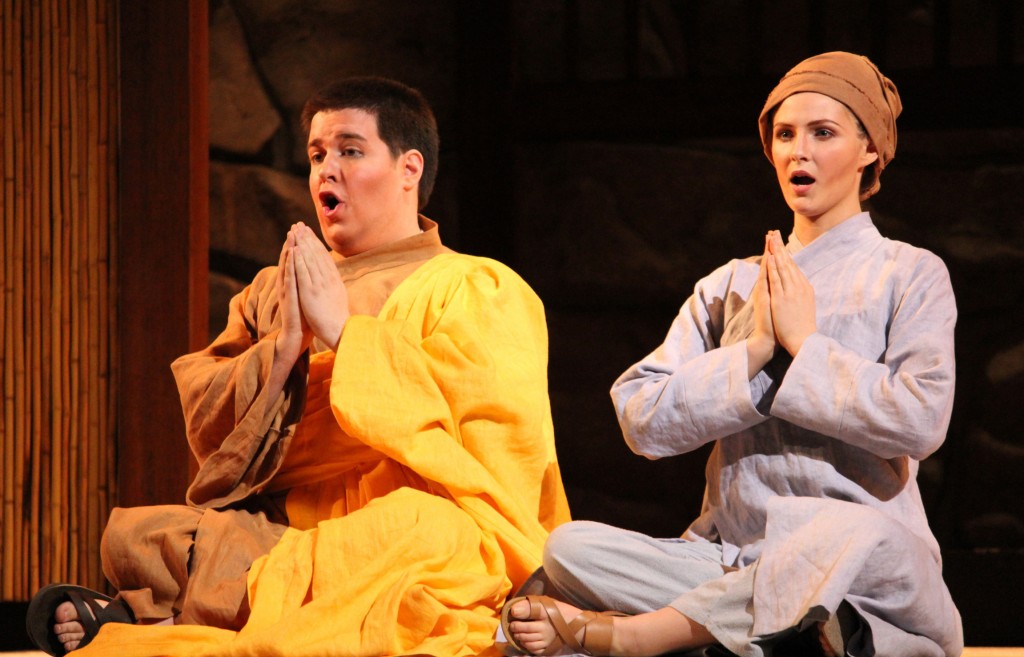

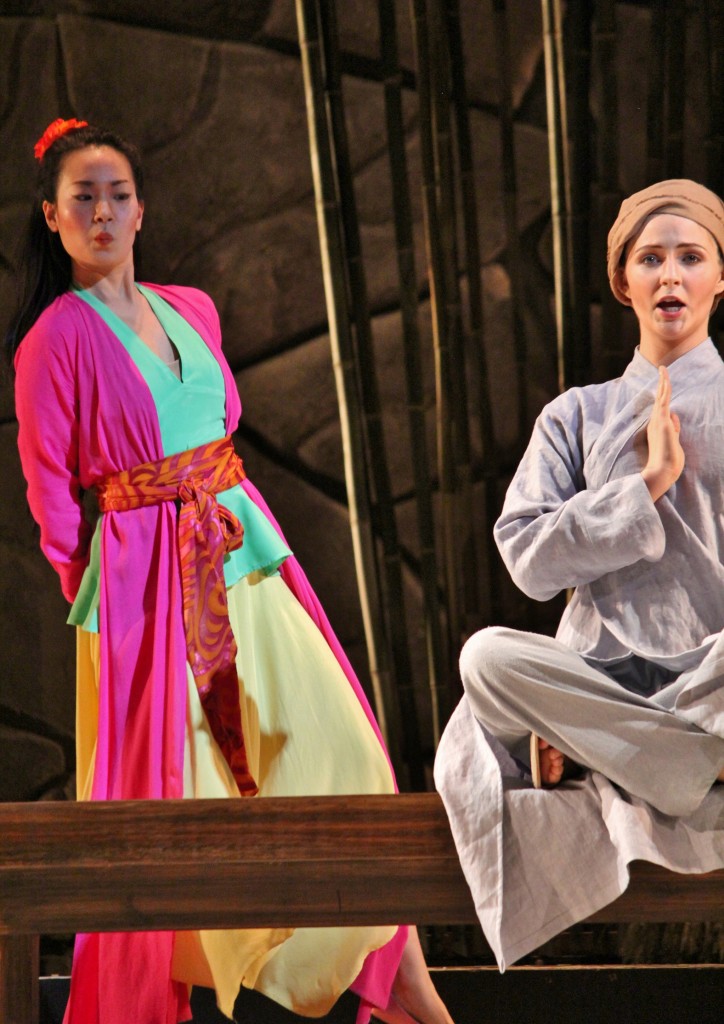
Đi sâu hơn nữa
Nhà soạn nhạc P.Q. Phan hoàn thành xuất sắc công việc viết tuần bản cho vở opera của mình. Ông bỏ 25 năm nghiên cứu và suy nghĩ về dự án vở opera Thị Kính cho đến khi ông tự tin có thể dựng một vở opera dựa vào câu chuyện Thị Kính một cách thành công. Không ngạc nhiên là tuần bản của The Tale of Lady Thị Kính có nhiều lớp ý nghĩa cần được giải thích ra để khán giả có thể hiểu được vở opera nhiều hơn và có cảm nhận sâu sắc hơn về văn hóa Việt Nam. Đây là điều rất bình thường đối với một vở opera mới. Thế nhưng có một điều rất vui là tại buổi diễn và qua nhiều email cảm tưởng, một số khán giả người Mỹ và người Việt đã có lời ca ngợi về sự sâu sắc trong lời thoại của tuần bản. Họ còn muốn mua một bản copy của tuần bản nữa. Khi nghe những lời tốt lành này từ khán giả, có lẽ không ai có thể vui hơn chính người viết tuần bản, P.Q. Phan. Bởi vì có gì vui bằng, khi thấy đỉnh cao của văn hóa Việt Nam thể hiện trong vở The Tale of Lady Thị Kính đã có người nhìn nhận và tiếp thu ở tầm quốc tế.
Thỉnh thoảng tôi cũng muốn vắt óc nghĩ ngợi cho vui về sự thâm thúy của vở opera The Tale of Lady Thị Kính. Càng nghĩ càng thấy rằng sự châm biếm ở đây đúng là rất sâu sắc. Mỗi một nhân vật trong The Tale of Lady Thị Kính, trừ Thị Kính, đều vừa là nhân vật hài vừa là nhân vật bi. Mỗi nhân vật, trừ Thị Kính, đều vừa châm biếm bản thân mình để vừa châm biếm xã hội. Đây chính là một cách làm khôn khéo của các tác giả nông dân ngày xưa để mua vui và để chỉ trích xã hội, để làm cho cuộc sống của họ được nhẹ nhàng và vui tươi trong một vài phút giải lao. The Tale of Lady Thị Kính cũng được sáng tạo ra với tinh thần như thế – nó là một tác phẩm nghệ thuật mang tính bi-hài.
Tôi rất mừng thấy rằng tính hài trong The Tale of Lady Thị Kính cũng được khán giả cảm nhận đúng mức. Trong nhiều lời cảm tưởng tôi nhận được, người ta khen rằng tính hài làm cân bằng tính bi trong vở opera. Còn nhiều người khác trong đó có cả trẻ em thì chỉ đơn giản cười thích thú với phần hài hước của vở diễn. Thế là tính hài của vở The Tale of Lady Thị Kính đã làm được một chức năng của nó rồi: tạo sự kết nối với khán giả, làm cho họ cười và giúp họ thư giãn. Còn chức năng châm biếm thì tôi cứ tiếp tục giải thích mỗi khi có dịp.

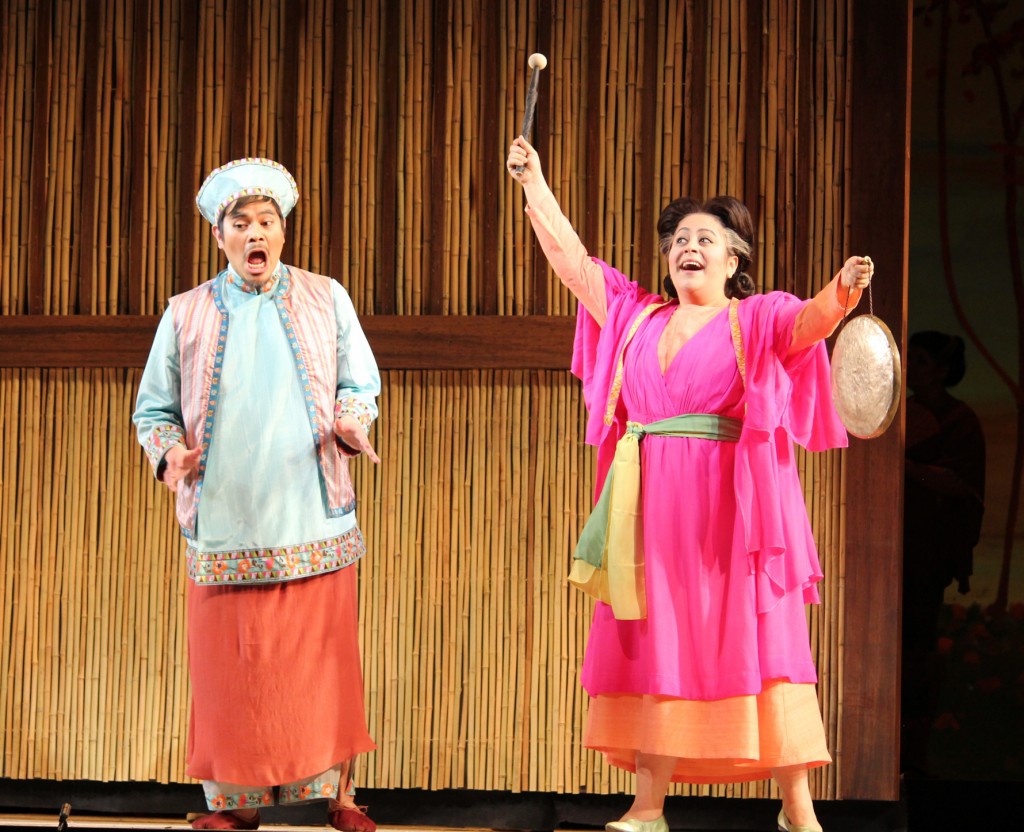

Không biết có ai thất vọng hay không, nhưng thật tình tôi không có gì để chê vở opera The Tale of Lady Thị Kính. Ngay lúc này đây khi đài VietFace TV đang chiếu phóng sự nhiều kỳ về công việc sáng tạo và dàn dựng vở opera The Tale of Lady Thị Kính tại nhà hát opera IU, cả P.Q. Phan và tôi đều nhận được thêm nhiều email của khán giả bày tỏ sự yêu thích và quan tâm đối với vở opera. Bản thân tôi thì thú thật đến bây giờ đã thuộc lòng cả vở opera này rồi và có thể hát theo bất kỳ ai. Có ai muốn hát theo với tôi không nào?
* Xem lại trên mạng video The Tale of Lady Thị Kính: Buổi diễn của ê kíp 1 ngày February 7, 2014 và ê kíp 2 vào February 14, 2014.
–
Giáo sư nhạc sĩ P.Q. Phan (Phan Quang Phục) là một nhạc sĩ sáng tác nhạc cổ điển đương đại (contemporary classical music), hiện sống tại Mỹ. Sáng tác của ông đã được trình tấu tại nhiều nơi trên thế giới và nhiều giàn nhạc nổi tiếng đã đặt ông soạn nhạc. Ông đã từng dạy nhạc tại University of Illinois ở Urbana-Champaign và Cleveland State University. Hiện ông là giáo sư hàm “Associate Professor” ngành sáng tác tại trường nhạc Jacobs School of Music, thuộc trường đại học Indiana University, ở Bloomington, IN. Xem thêm tại đây.
Anvi Hoàng sinh trưởng tại Việt Nam, tốt nghiệp Đại Học Khoa Học Xã Hội và Nhân Văn, sang Mỹ học cao học và rồi tìm thấy niềm vui trong việc viết lách tự do. Anvi viết thuần thục cả tiếng Anh và tiếng Việt. Viết để tung hô văn hóa Việt Nam và viết về sự thay đổi. Anvi thích khám phá thế giới ‘chân trong chân ngoài’ mà cô đang sống, và thích nước. Cô sống ở thành phố Bloomington, thuộc tiểu bang Indiana.

Three words for The Tale of Lady Thị Kính
For the entire month of January and for the first week of February, I attended hours of rehearsals with the orchestra, the chorus, and the staging. I witnessed four dress rehearsals, four performances on February 7, 8, 14 and 15, and took thousands of pictures. Is it possible for me to be objective about The Tale of Lady Thị Kính? Yes, it is. With facts and some time to reflect, I am ready to share the following thoughts.
Costumes, set, and music
The Tale of Lady Thị Kính is about a transcendental journey of a young fair lady to her Buddhahood. Kicked out of her in-laws’ house because they thought she tried to kill her husband, Thị Kính disguises herself as a man to enter monkhood. At the temple, pursued by a beautiful young girl and later accused of getting her pregnant, Thị Kính, now Tiểu Kính Tâm, once again is kicked out of her/his shelter. He decides to accept the sins of others to grant them a new life by taking in Thị Mầu’s baby and goes to the marketplace to beg for food to raise the boy. Tiểu Kính Tâm later dies of exhaustion and starvation. Admiring Thị Kính’s self-sacrifice, the Buddha declares her Phật Quan Âm Thị Kính (Our Benevolent Buddha Thị Kính). The emotional force of this story leads me to think about people like Mother Teresa as the reference emerges quite naturally. One would even think of Jesus. The Tale of Lady Thị Kính is indeed a universal story about love, compassion, and selflessness, set in the 10th century Vietnam. It is not an overstatement for me at this point to say that these three words – love, compassion and selflessness – are what the audience felt after they experienced The Tale of Lady Thị Kính. The most common words I heard were “amazing,” “moving,” and “touching.”
A standing ovation, for a new opera, and for all four performances of The Tale of Lady Thị Kính is a red stamp of approval no one can deny. Well, in some places, blue, purple, or black stamp works in the same way. Bravo to composer and librettist P.Q. Phan; conductor David Effron; stage director Vince Liotta and his artistic team; set designer Erhard Rom; costume designer Linda Pisano; lighting designer Todd Hensley; IU Opera Theater technical director Alissia Garabrant; and her building/realization team: artists in the woodshop, the paint and properties shop, the costume shop; the two casts; and the electric team and the crew behind the curtains making everything work.


Vince Liotta stressed many times in interviews that recreating an anthropologically Vietnamese theater is the last thing he and his team would do, especially given the modern music of The Tale of Lady Thị Kính by P.Q. Phan. Instead, they filtered things through their Western view to create feelings that both people who were familiar with Vietnamese culture and those who were not, could relate. This was a wise decision and approach – and they most certainly succeeded.
The result is a very modern and abstract stage setting to fit the general vision and to reflect the predominantly Western music of The Tale of Lady Thị Kính. The use of vivid colors such as pink, yellow, orange, green, gold to indicate time and space, and interesting textures, such as jute for the drops and bamboo for the sliding panels, together with the clean line design, provide a lot of space for imagination, while demonstrating Vietnamese sensibility in the design details themselves. In terms of staging, the Vietnamese sensibility is further enhanced by the selected and symbolic use of movements and theater properties such as the fans, the umbrellas, the offerings, the Buddha statues, etc. The costumes contribute to the cultural differences in that the colors are the most vibrant anyone has ever seen in an opera. So diverse in style, the costumes were definitely befitting of the universalist value of the opera. The lighting accentuates all the textures and colors on stage when an unconventional approach was used to illuminate everything on stage. The traditional method is usually to hide different details of the set and to show only certain spots.




In The Tale of Lady Thị Kính, when each character appears, they shine in the light, with their unique movements, characterization, costume, and most of all, music – the first and last element that connects everything together. The audience appreciated Thị Kính‘s demure expressions, loved Thị Mầu‘s flirtatious movements, laughed at Nô’s silly agility as a servant, feared Sùng Bà‘s ferocious mother-in-law threatening behavior, beamed at Sùng Ông’s drunk walking and burps, and so on. Having had a chance to witness them work and talk to them, I could tell you that every single member of the two casts loved their singing parts. One, the music is beautiful. Two, everyone has a chance to sing and to showcase their voice. In other words, each character has their own rhymes and rhythms, literally, to sing. For instance, Nô sings jagged lines as a servant; Thị Kính weaves a thoughtful, proper and transcending nest of arias; Thiện Sĩ embellishes arrogant, naïve melodies; Vợ Mõ boats her wicked wit; Thị Mầu soars with songs that seem to come off the top of her head; while her four friends chant the mesmerizing Nam Mô A Di Đà Phật, provoking at times, sacred others.





The orchestration is breathtaking, as many people described in their responses. When you listen to the music, sometimes you see a single flower, sometimes a garden full of flowers; you feel the sadness, the happiness, the ugliness, the irony of the human souls; you see the thin and thick space; you see light and darkness in the air; you feel textures. ‘Colorful’ is one exact word that comes to mind that makes sense to you. You suddenly understand what musicians mean when they say, “The music is very colorful!” For one thing, the music of The Tale of Lady Thị Kính is very colorful. The more attention you give to it, the more mesmerizing it becomes. Composer P.Q. Phan intended to create a type of music that is entertaining for audiences, while remaining sophisticated for academic music experts. He stays true to his statement.
During the first week of the premiere, many people came and told us they would come to see the opera the second time. And they did. After the first week world premiere, I have been collecting responses about the opera from anyone who is willing to share (and will post more here.) The unanimous agreement is that the set and costumes are stunning, the acting of each character amazing, and the music beautiful. Among the responses are those from 200 Vietnamese and Vietnamese Americans from out of town who drove or flew to Bloomington just for the show and those who watched it online. Don’t forget that most Vietnamese and Vietnamese Americans who experienced The Tale of Lady Thị Kính are already familiar with the characters in this popular ancient folk story. They know who Thị Mầu or Vợ Mõ is, what they look like and are supposed to act like. The Vietnamese and Vietnamese Americans did not feel alienated but, on the reverse, found it endearing to listen and watch Thị Kính, Thị Mầu, Vợ Mõ, etc. be performed by Americans. For the non-Vietnamese to be truly touched by the story and the performance is already an immense cross-cultural success for the opera.



Go deeper
Composer P.Q. Phan outdid himself as the librettist for The Tale of Lady Thị Kính in an outstanding endeavor to translate and reconstruct the original script. It took him 25 years to research and to reflect on this opera before he was totally confident he could bring it to life. Needless to say, there are layers of meanings in the libretto that require explanation in order for the audience to really appreciate the opera and Vietnamese culture at a deeper level. Yet, after the performances and in the emails received, many Americans as well as Vietnamese and Vietnamese Americans, commented on the sophistication of the libretto. They even wanted to buy a copy of it. I don’t think anyone is happier than the librettist himself, PQ Phan, to hear such words from the audience. It highlights the transcendent essence of Vietnamese culture that Phan strives to bring to life in The Tale of Lady Thị Kính.
Sporadically, as I try to pick my brain, the sophisticated satirical sections in The Tale of Lady Thị Kính appear in my mind as layered cultural nuances that I can keep peeling. Each character, except Thị Kính, is both comical and serious. Each character, except Thị Kính, mocks themselves to mock society. This is one way the witty peasant authors of this thousand year-old folk lore had fun in their own way. That is how The Tale of Lady Thị Kính is created to be – a satirical, dramatic work.
I was happy to see that the satire is not lost to the audience. Many responses I received praised the comical part of the opera as it balances the dramatic element, and many audience members – including children – simply enjoyed it. This is exactly an intended function of humor in The Tale of Lady Thị Kính: to find a way to connect to the audience, to entertain, and to relax them.



It could be disappointing for you to hear this, but I have no negative comments for The Tale of Lady Thị Kính. Right this moment, as VietFace TV broadcasts their multi-part documentary about the making of The Tale of Lady Thị Kính, countless individuals have emailed PQ Phan and myself to express their interest in the opera. By now, I have memorized by heart the whole opera and can sing along with anyone. Who wants to join me?
* Watch the live recordings of The Tale of Lady Thị Kính: Available are performances of cast 1 on February 7, 2014 and cast 2 on February 14, 2014.
P.Q. Phan has written a large variety of genres including symphonies, opera, chamber music, and song cycles. He is currently an Associate Professor of Music in composition at Indiana University, Jacobs School of Music. He had previously taught at University of Illinois at Urbana-Champaign and Cleveland State University. Read more here.
Anvi Hoàng grew up in Vietnam and received her bachelor’s degree from the National University in Hồ Chí Minh city. She came to the United States for graduate studies and has then found happiness in writing. She makes it her goal to celebrate Vietnamese culture in her writing. A bilingual writer in English and Vietnamese, Anvi enjoys exploring the in-between worlds she is in, and loves water. She lives in Bloomington, IN.
Do you enjoy reading diaCRITICS? Then please consider subscribing!
Please take the time to share this post (below). Sharing (on email, Facebook, etc.) helps spread the word about diaCRITICS. Join the conversation and leave a comment!
What do you think about the satirical element in The Tale of Lady Thị Kính? What do you think about the set, costumes, lighting, acting, and singing in The Tale of Lady Thị Kính?








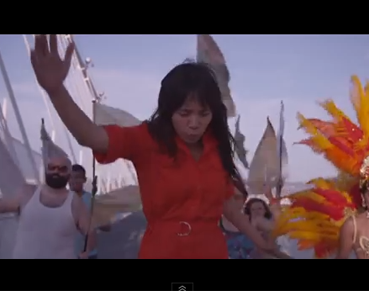
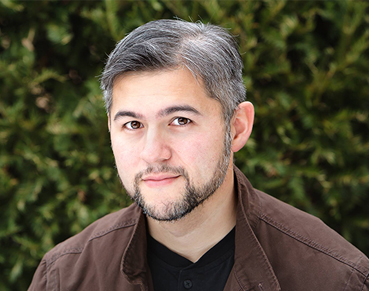


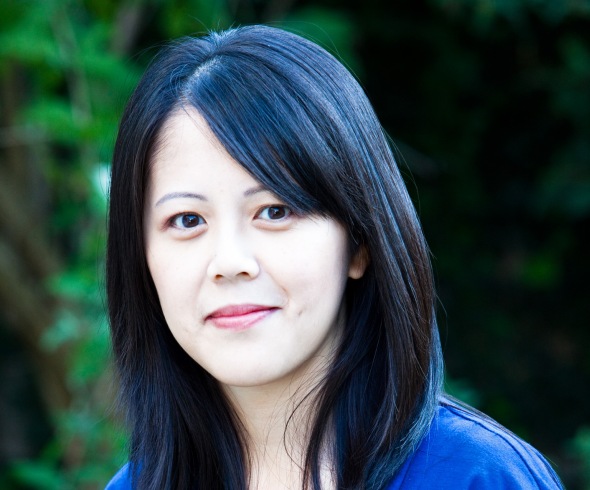

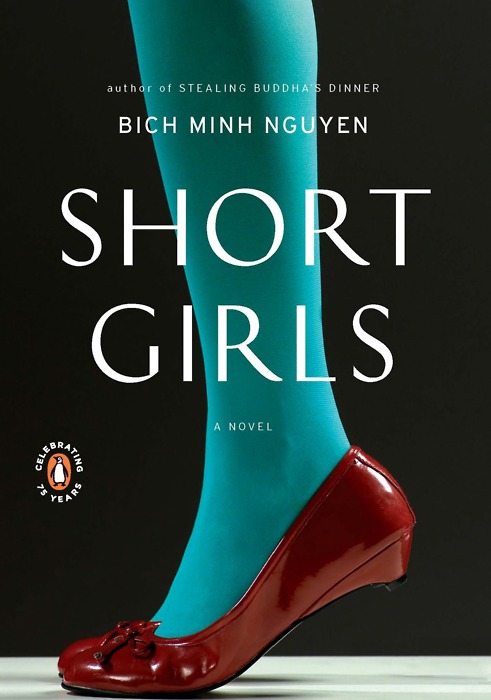
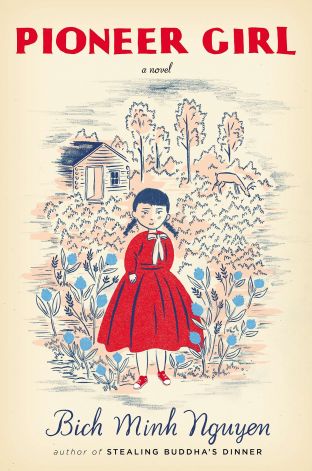
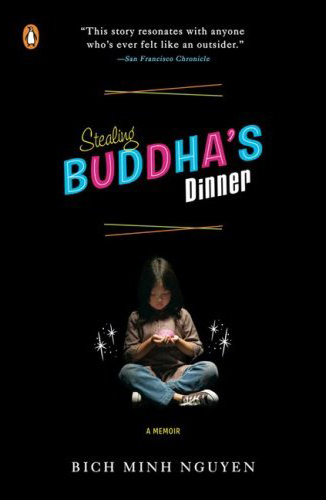

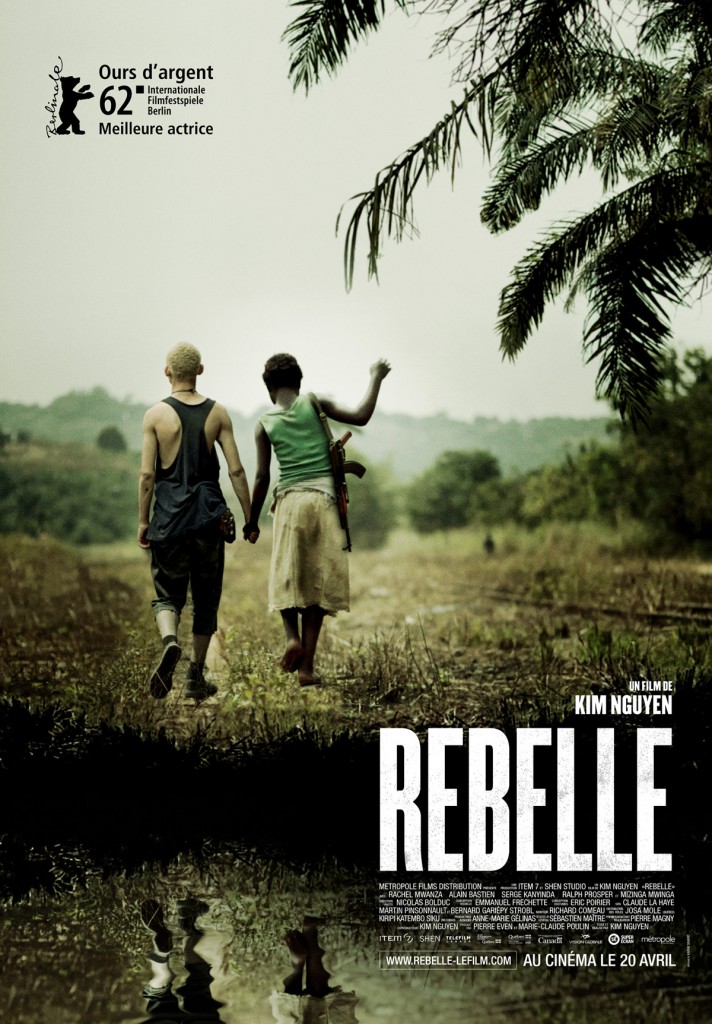






 •From speaking no English to becoming a broadcaster,
•From speaking no English to becoming a broadcaster, •
•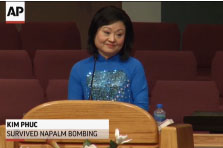 •
• •
•
 •
• •
• •
• • Hanoi hospitals refuse medical treatment
• Hanoi hospitals refuse medical treatment • A group of
• A group of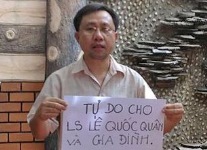 • Nguyen Bac Truyen,
• Nguyen Bac Truyen, • Rotterdam is advising Ho Chi Minh City on
• Rotterdam is advising Ho Chi Minh City on •
• •
• •
•